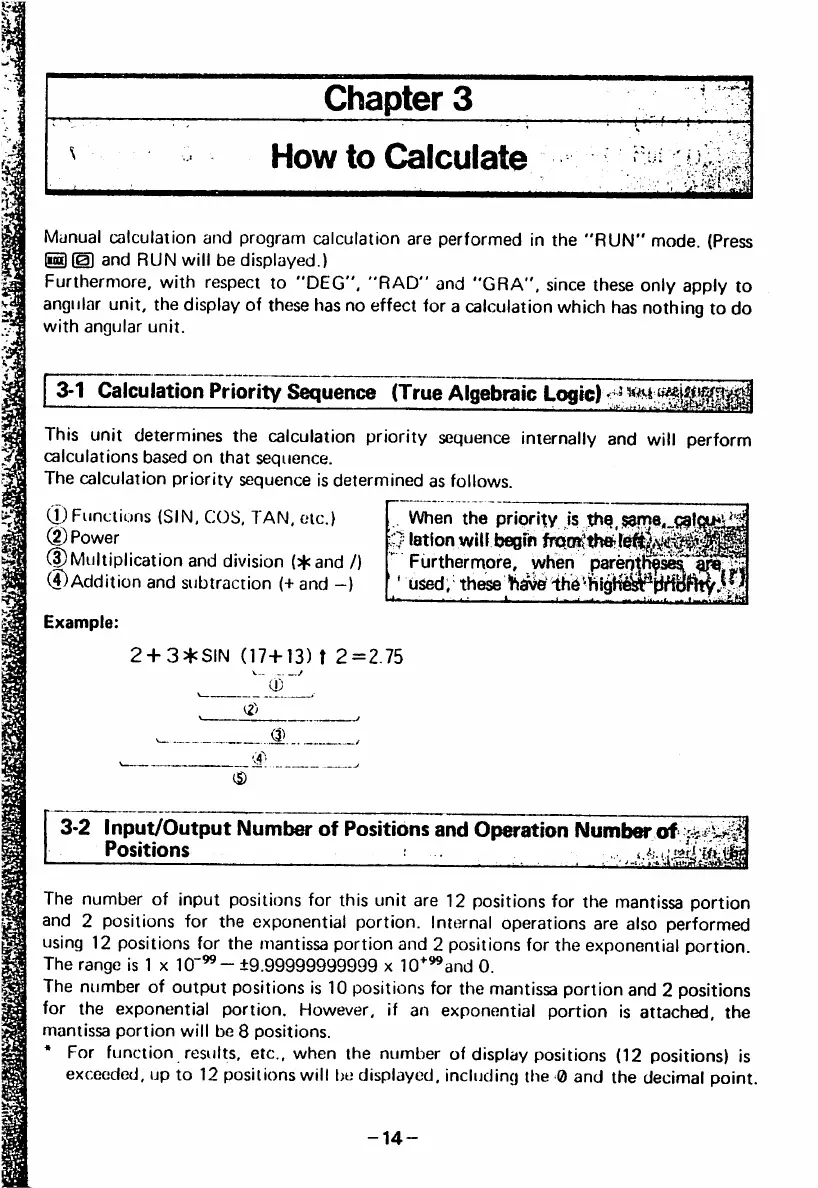C h a p t e r s i
How to Calculate
."v.-:
Munual calculation and program calculation are performed in the "RUN" mode. (Press
and RUN will be displayed.)
Furthermore, with respect to "DEC", "RAD" and "GRA", since these only apply to
angular unit, the display of these has no effect for a calculation which has nothing to do
with angular unit.
3-1 Calculation Priority Sequence (True Algebr^c Logic)
This unit determines the calculation priority sequence internally and will perform
calculations based on that sequence.
The calculation priority sequence is determined as follows.
(p Functions (SIN, COS, TAN, etc.)
(2) Power
(DMultiplication and division (sfcand /)
0Addition and subtraction (+ and -)
When the priority Is Jthe,j5^e,„^|a^
0 latlon.will.begrfi
' Fijrthermpre, when parenl[l^s^1pj^s
' used,' these
Example:
2 + 3 * S I N ( 1 7 + 1 3 ) t 2 = 2 . 7 5
3-2 Input/Output Number of Positions and Operation Number of
■ P o s i t i o n s ! . . .
The number of input positions for this unit are 12 positions for the mantissa portion
and 2 positions for the exponential portion. Internal operations are also performed
using 12 positions for the mantissa portion and 2 positions for the exponential portion.
The range is 1 x 10"®®-±9.99999999999 x 10^®®and 0.
The number of output positions is 10 positions for the mantissa portion and 2 positions
for the exponential portion. However, if an exponential portion is attached, the
mantissa portion will be 8 positions.
• For function results, etc., when the number of display positions (12 positions) is
exceeded, up to 12 positions will be displayed, including the 0 and the decimal point.
-14-

